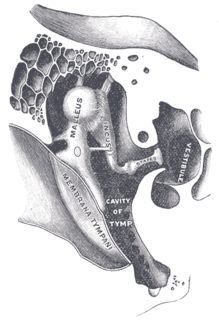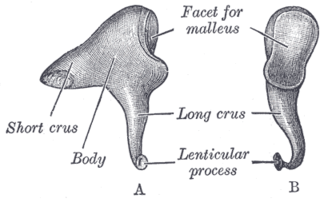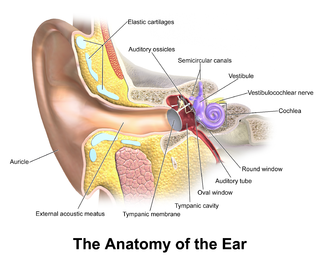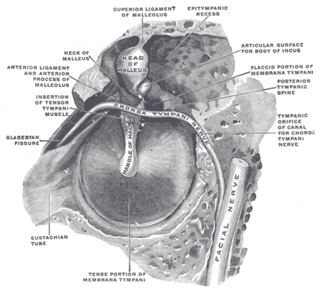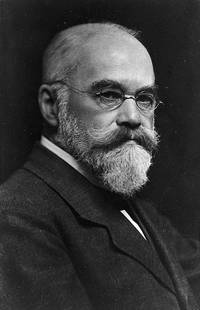
Hermann Hugo Rudolf Schwartze (7 September 1837 – 20 August 1910) was a German aurist, born at Neuhof in Pomerania and educated in Berlin and Würzburg. He settled in Halle, where he became assistant professor of otology at its university.
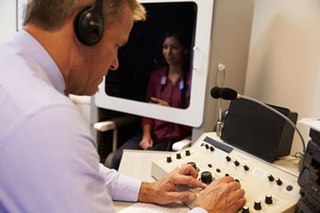
Audiology is a branch of science that studies hearing, balance, and related disorders. Audiologists treat those with hearing loss and proactively prevent related damage. By employing various testing strategies, audiologists aim to determine whether someone has normal sensitivity to sounds. If hearing loss is identified, audiologists determine which portions of hearing are affected, to what degree, and where the lesion causing the hearing loss is found. If an audiologist determines that a hearing loss or vestibular abnormality is present he or she will provide recommendations for interventions or rehabilitation.
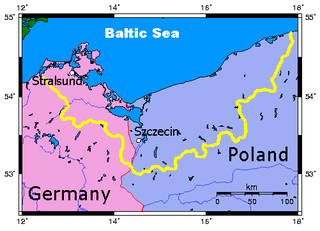
Pomerania is a historical region on the southern shore of the Baltic Sea in Central Europe, split between Germany and Poland.

Berlin is the capital and largest city of Germany by both area and population. Its 3,748,148 (2018) inhabitants make it the second most populous city proper of the European Union after London. The city is one of Germany's 16 federal states. It is surrounded by the state of Brandenburg, and contiguous with its capital, Potsdam. The two cities are at the center of the Berlin-Brandenburg capital region, which is, with about six million inhabitants and an area of more than 30,000 km², Germany's third-largest metropolitan region after the Rhine-Ruhr and Rhine-Main regions.
One of the founders of modern otology, Schwartze made a particular study of the anatomy of the ear and improved the methods of paracentesis on the tympanic membrane and of the opening of inflamed apophyses of the middle ear.
Otology is a branch of medicine which studies normal and pathological anatomy and physiology of the ear as well as their diseases, diagnosis and treatment. Otologic surgery generally refers to surgery of the middle ear and mastoid related to chronic otitis media, such as tympanoplasty, or ear drum surgery, ossiculoplasty, or surgery of the hearing bones, and mastoidectomy. Otology also includes surgical treatment of conductive hearing loss, such as stapedectomy surgery for otosclerosis. Neurotology, a related field of medicine and subspecialty of Otolaryngology, is the study of diseases of the inner ear, which can lead to hearing and balance disorders. Neurotologic surgery generally refers to surgery of the inner ear or surgery that involves entering the inner ear with risk to the hearing and balance organs, including labyrinthectomy, cochlear implant surgery, and surgery for tumors of the temporal bone, such as intracanlicular acoustic neuromas. Neurotology is expanded to include surgery of the lateral skull base to treat intracranial tumors related to the ear and surrounding nerve and vascular structures, such as large cerebellar pontine angle acoustic neuromas, glomus jugulare tumors and facial nerve tumors.

Anatomy is the branch of biology concerned with the study of the structure of organisms and their parts. Anatomy is a branch of natural science which deals with the structural organization of living things. It is an old science, having its beginnings in prehistoric times. Anatomy is inherently tied to developmental biology, embryology, comparative anatomy, evolutionary biology, and phylogeny, as these are the processes by which anatomy is generated over immediate (embryology) and long (evolution) timescales. Anatomy and physiology, which study (respectively) the structure and function of organisms and their parts, make a natural pair of related disciplines, and they are often studied together. Human anatomy is one of the essential basic sciences that are applied in medicine.

Paracentesis is a form of body fluid sampling procedure, generally referring to peritoneocentesis in which the peritoneal cavity is punctured by a needle to sample peritoneal fluid.
He wrote Praktische Beiträge zur Ohrenheilkunde (1864), Pathologische Anatomie des Ohrs (1878; English translation by J. O. Green, The Pathological Anatomy of the Ear, 1878), Lehrbuch der chirurgischen Krankheiten desOhrs (1885), and Grundriss der Otologie (1905). He was co-editor with Emil Berthold of the Handbuch der Ohrenheilkunde (1892–1893); and in 1864 was co-founder of the Archiv für Ohrenheilkunde with Adam Politzer and Anton von Troeltsch. This publication was the first journal in Germany dedicated to ear disorders.
